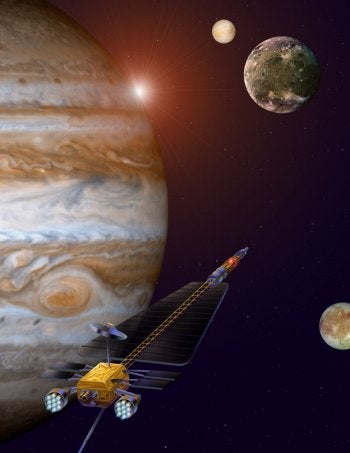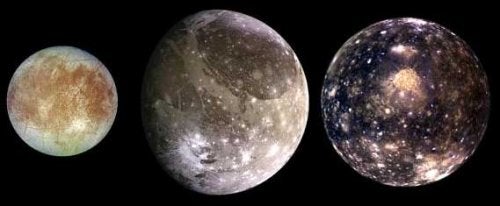JIMO would also incorporate a new electric propulsion technology: an ion engine fueled by a nuclear fission reactor. NASA’s Deep Space 1 mission, which flew past Comet Borrelly in September 2001, proved the capabilities of ion propulsion, but that spacecraft used solar energy for its power.
The nuclear fission reactor would allow JIMO to travel much farther from the sun and have access to 100 times more power than any other prior mission of comparable size. According to NASA, the energy produced by this reactor would allow the mission to improve the type of science it conducts, enhance communications, use advanced instruments, and make faster data transmissions.
Upon arriving at Jupiter, JIMO would initially orbit the giant planet before repositioning itself around Callisto. After several months, it would fire its ion engine and move itself into position around Ganymede. Finally, it would orbit Europa, which is saved for last because of the especially intense radiation environment around the innermost icy moon.
JIMO currently has three overall science goals for its tour of the jovian system: to evaluate the potential for life, learn about the moons’ origin and evolution, and study the radiation environment. While investigating the moons’ possible subsurface oceans, JIMO would also measure the thickness of their icy crusts and chart where organic compounds and other biologically significant chemicals exist on the surface Meanwhile, it would study the moons’ structures, surface features, and compositions. Finally, JIMO would examine the moons and their surroundings to assess the radiation environment and how the moons are affected by it.
For more about JIMO, visit the mission’s website.












